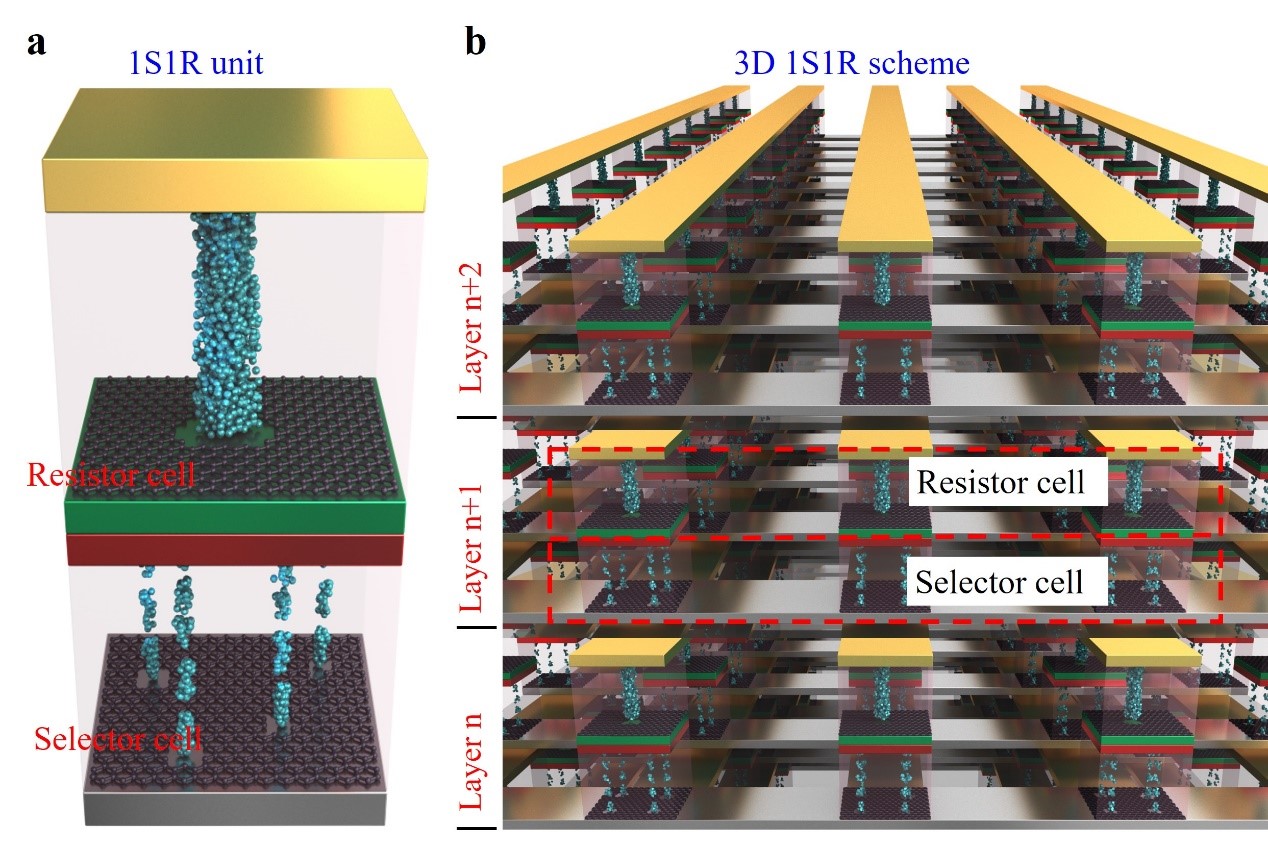In order to meet the demand of big data, 3D integration has become the most promising way of memory technology. Resistive random access memory (RRAM), as a new kind of memory technology, has been considered as a competitive candidate for the next generation memory technology because of its excellent characteristics including low power consumption, high speed, simple structure for 3D integration and so on. One-selector-one-resistor (1S1R) scheme cell is the most potential application scheme for 3D high density integration of RRAM, where Non-volatile resistor and volatile selector are two indispensable components in 1S1R memory cell. Cation-based resistive switching (RS) device can be used as for memory and selector applications: when operated under high compliance current, the stronger CFs form and device shows good retention for nonvolatile memory application; when operated under low compliance current, the tiny and fragile CFs form and device shows poor retention for volatile selector application. To ensure the 1S1R cell work properly, the drive current of the selector must be higher than that of the resistor, which is contradictory to the classic relationship between current and retention (higher current, better retention) of cation-based RS device. Therefore, to satisfy the need of cation-based RS device as memory/selector for 1S1R application, it is a matter of agency to modulate the retention characteristic of the RS device and break the limitation of the typical current-retention dilemma.
Recently, group of academician Ming Liu from Institute of Microelectronics of the Chinese Academy of Sciences (IMECAS) has made important progress in modulation of current-retention characteristic in cation-based RS device together with their cooperative partners, namely Zengfeng Di group from Shanghai Institute of Microsystem and Information Technology (SIMIT) and Xiangheng Xiao group from Wuhan University. According to the oriental philosophy of “One chopstick can be broken easily, while ten pairs of chopsticks hold each other tightly”, they put forward the idea of using graphene defect engineering to control the size and quantity of cation injecting path in the RS layer, thus centralizing/decentralizing the conductive filament (CF) distribution in cation-based RS device to modulate the CF stability. The proposed method has broken the typical current-retention dilemma. This method not only helps to realize a volatile selector with high drive current (bidirectional 500μA) and low retention, but also realize a non-volatile resistor with low operating current (1μA) and poor retention (Figure 1). This proposed method paves the way for ultimate high density 3D 1S1R integration application of RRAM (Figure 2). This work has realized bidirectional modulation of current-retention characteristic for the first time in this field. In addition, this general method of blocking ion migration/diffusion by 2D material can also be applied in other research fields such as ion batteries, ion sensors and so on.
These research results were published in Advanced Materials (DOI: 10.1002/adma.201705193) entitled “Breaking the current‐retention dilemma in cation‐based resistive switching devices utilizing graphene with controlled defects”, and was chosen as inside back cover. Application of corresponding work for national invention patent is well under way. Dr. Zhao Xiaolong from IMECAS, Dr. Ma Jun from SIMIT and Professor Xiao Xiangheng from Wuhan university are the co-first authors of the paper. Academician Ming Liu and researchers Qi Liu from IMECAS and Zengfeng Di from SIMIT are the co-corresponding authors of the paper. This research was supported by the National Key Research and Development Program of China, the National Natural Science Foundation of China, Beijing Science and Technology Personnel Training Program and Chinese Academy of Sciences Strategic Priority Program and so on.

Figure 1: The I-V curves of cation-based (a) volatile selector with high drive current and poor retention and (b) non-volatile resistor with low operating current and high retention modulated by graphene defect engineering.

Figure 2: Schematic illustration of cation-based (a)1S1R cell and (b) its 3D integration scheme enabled by graphene defect engineering.
Papers link:http://onlinelibrary.wiley.com/doi/10.1002/adma.201705193/full












